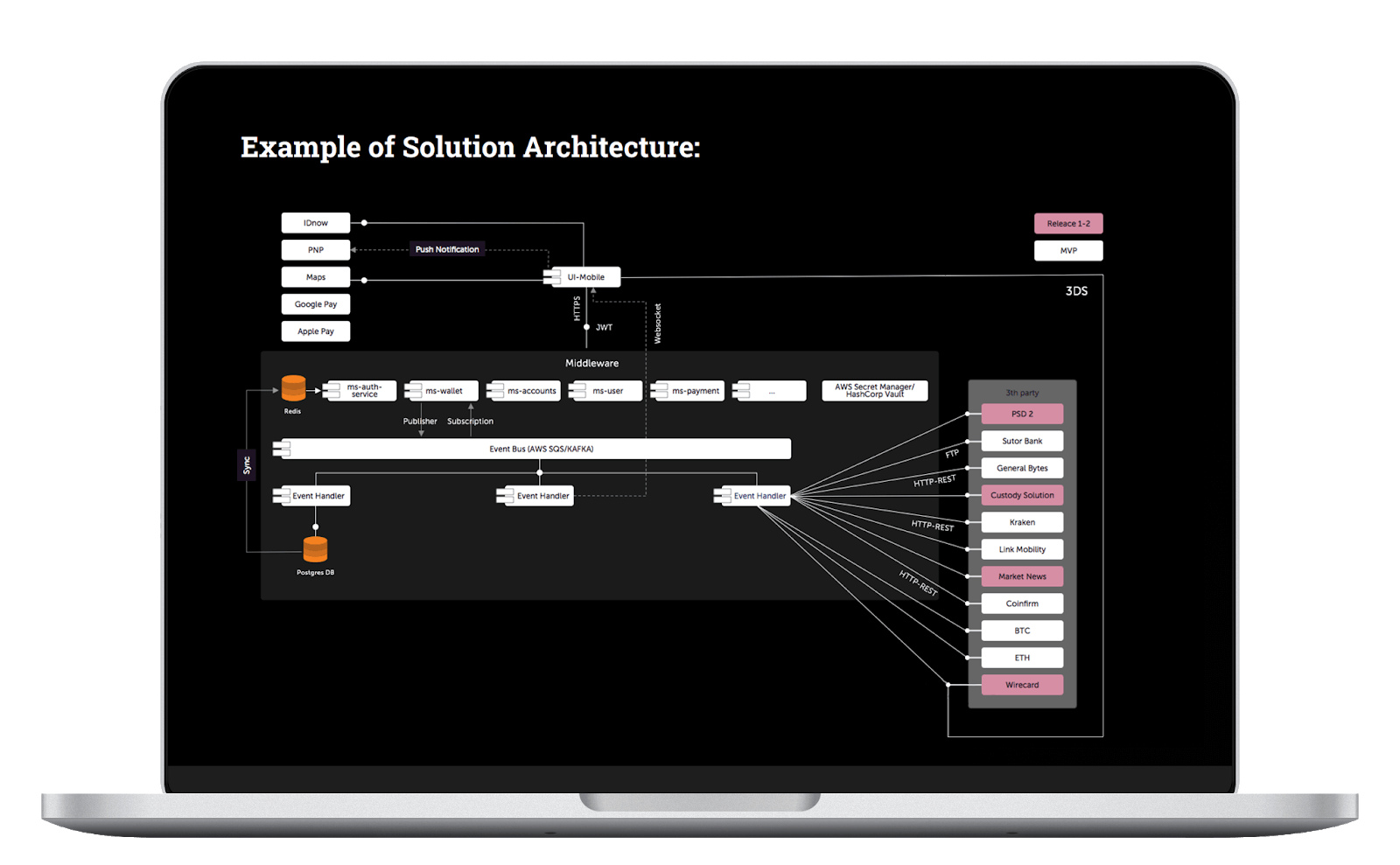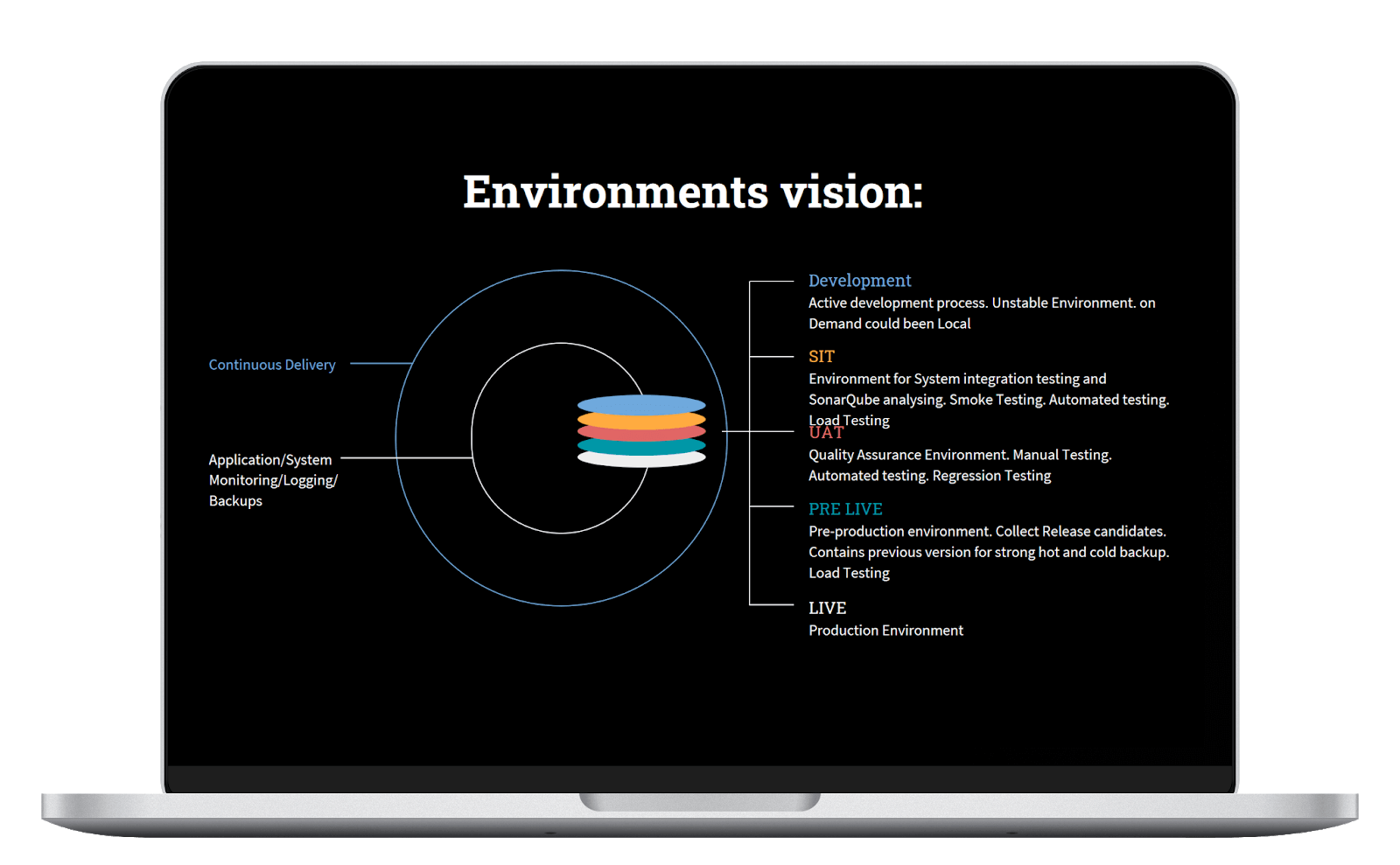Inception Phase of Software Projects with The APP Solutions
- What is the inception phase in agile?
- What is inception in software engineering?
- Inception phase deliverables
- What are the inception phase stages?
- Step 1. Initiation
- Step 2. Research
- Step 3. Gathering requirements
- Step 4. Prototyping
- Step 5. Preparation for the development stage
- What happens after the Inception phase?
- The inception phase adjusted to your needs
- The unified process of the inception phase for clear objectives for the project
The inception phase is a unified process that helps business owners validate their business idea, define risks, clarify the project’s requirements, and make the development process run smoothly.
This article will share The APP Solutions experience describing the inception phase of a software project, its main stages, deliverables, and explaining why it is crucial for a project’s success.
What is the inception phase in agile?
The inception phase is a unified process of gathering objectives for the project and getting ready for the development phase. The inception phase brings the following benefits:
Predicted results. We break down your project into smaller parts called use cases and user stories to clarify how one or other features should perform and then confirm the results with you
Flexible project scope. With the big picture of your project at hand, you can easily change the project’s MVP scope
Reduce development costs. Agreed project specification, architecture, and tech solutions allow us to describe the project in more detail, prioritize tasks more effectively, and schedule the development phase in a better way
Do you need to hire us for an inception phase for your particular project? Let’s find out.
Emerging Trends to Elevate Your Inception Phase in 2025
Every stage in product development could be enhanced by adapting to emerging trends, cutting-edge technologies, and industry-specific practices, and the inception phase is no exception. Here are three main tendencies that help to underlie a secure foundation for any project.
- AI-driven analysis. AI has penetrated almost all stages of development, and for good reason. In the initial stage of the project, it helps companies accelerate mapping, improve analysis, and uncover hidden dependencies.
- Collaborative prototyping. Collaboration with real users provides crucial information for relevant and accurate decision-making that ensures your product meets the changing demands of the market in time.
- Continuous inception mindset. To have a clear direction, leading companies recommend introducing an inception mindset iteratively across various stages.
What is inception in software engineering?
When you start a new mobile app project, there is tons of work to be done – selecting the best mobile app development team, shaping the business idea, clarifying requirements, creating technical documentation, and finding the most appropriate tech solutions.
There are too many tasks for a non-tech person. To complete all of these tasks you can hire a development team to start the inception phase.
The inception phase is a unified process of collecting and analyzing information about the project for:
- Creating a project knowledge base for accessible knowledge transferring to avoid unnecessary development alterations and ensure a quick onboarding time
- Structuring a team of people with the required experience and expertise
- Mitigating risks which occur during software development
- Performing project monitoring and providing excellent customer service – constant business function assessment, clear separation of responsibilities, transparent decision making, and escalation path
The business analysis part of this phase helps to understand the end-users, their needs, and requirements.
The technical aspect of the process leads to the system requirements specification that includes information necessary for development—for example, primary and additional features, measurable deliverables, and more.
At the end of the inception phase, you’ll have a well-rounded and in-depth understanding of the project goals, scope, and limitations.
What is the inception phase scope of work?
The scope of the unified process of the inception phase includes the following activities:
- Elicitation of business goals, requirements, and other drivers that affect the implementation of a solution
- Description of use cases of the solution
- Generation and justification recommendations and decision options to implement the solution
- Creation of prototypes of UI/UX design of the solution
- Estimation of implementation scope and preparation of resource plan for the implementation phase
Inception phase deliverables
The App Solution team will prepare and deliver these deliverables to the client:
Technical documentation structure for the MVP phase
Documentation covering the MVP scope and including:
- Elicited requirements and constraints
- Defines solution use cases
- Written solution architecture recommendations and decision options
Prototype of UI/UX
Our designer will create 3-4 screens of design proposals or assessment reports of existing designs.

[UI/UX design prototype, made by The APP Solutions. Try it on the link]
Resource plan for implementation
Our team estimates the implementation of the project and plans the development resources for the next phase.
What factors are estimated in the inception phase?
Since the inception phase is a unified process that includes many tasks from different areas, we gather the following team members that have specialized expertise in a particular sphere:
Business Analyst for:
- Driving requirement sessions
- Performing requirement analysis and prioritization
- Collecting and writing use cases
- Writing documentation
Solutions Architect for:
- Initiating architectural sessions
- Performing architectural analysis
- Writing architecture vision or assessment report
- Composing and estimating the implementation road map

[Example of project system architecture made by The APP Solutions Solution Architect]
UI/UX designer for:
- Running UI/UX sessions
- Performing UX analysis
- Creating and preparing UI/UX design of the solution
Technology Experts for:
- Contributing to the architecture analysis within their area of technological competence
- Participating in the architectural sessions
- Contributing to the assessment report, estimates, and presentation

[Environment vision example made at The APP Solutions]
Client’s Obligations
The client acknowledges that the completion of the Deliverables under this proposal depends on and requires the client’s commitment to provide all information needed to complete deliverables, give access to the necessary product owners and technical participants, and provide access to assets required by this phase.
You, as a client, agree to timely provide the mentioned above resources for The App Solutions to fully comply with its obligations under this proposal.
What are the inception phase stages?
The inception phase kicks off after you’ve signed an NDA, given us the project vision, and approved a rough project estimation. The inception phase includes the following software project planning activities:
Step 1. Initiation
During this planning phase of the software development life cycle, our business analyst schedules a call with you to clarify your project objectives and strategy, including target users, monetization models, an estimated number of users, and project scaling perspectives.
The main activities during the unified process of the inception phase are:
- Introduce the team to stakeholders
- Review your business case and project goals
- Define the current state of the project
Step 2. Research
Next, the Business Analyst (BA) conducts market and competitor research to find out whether there is a place for such a business case in the market and to show how many similar projects already exist.
Main activities include:
- Define business goals and needs
- Demo of an existing product
- Requirements elicitation session
- Identify stakeholders’ concerns, risks, and issues
Step 3. Gathering requirements
We write down technical requirements for your project’s business case and start creating project technical documentation with use cases, user stories, suitable technologies, and third-party integrations.
Main activities are:
- Technical assessment session
- Requirements elicitation session
- Collect functional and non-functional requirements
- UI/UX review session
- Identify and verify solution use cases
Step 4. Prototyping
Using the use cases of your project, our designer starts making layouts, wireframes, and prototypes while consulting with you on each result.
Our team is busy with the following actions:
- Define scope boundaries
- Prioritize the scope
- Define MVP scope
- Prepare outcome documentation
- Validate outcomes with stakeholders
Step 5. Preparation for the development stage
Now, using a technical project specification, we prioritize features to identify the MVP’s scope, i.e., the list of functions sufficient to verify your business model and estimate the time and money required to implement one or other features.
Main activities are:
- Finalizing outcome documents
- Sending outcomes to the client
- Final meeting to present deliverables to all client stakeholders
What happens after the Inception phase?
When the inception phase is over, you have several options:
- You can use the technical documentation to launch the development stage with our team
- Compare our technical specification with specifications provided by other developers and select the best one
- Extend your existing development team with our specialists to build your project using our technical documentation
The inception phase adjusted to your needs
There are three main scenarios in which we provide clients with the inception phase:
Project lifecycle objectives from scratch
In this case, the main inception phase objective is to disprove or confirm your business idea. To achieve this, we create technical documentation so that you can build the project’s MVP.
The main deliverables are user stories, use cases, mockups, diagrams with system architecture recommendations, a list with technologies, third-party integrations, and precise estimation of project cost and length.
Project prototype without tech specification
If you have a ready-made project design and prototype, you can hire us to shape the technical side of your project, such as system architecture, user stories, and feature lists.
In this case, you will receive technical documentation that will include high-level requirements, use cases, user stories with general user flow, project system architecture diagrams, detailed project cost estimation, and project timeframes.
Improvement of a ready-made project
Such clients have ready-made projects, but they do not meet their business goals or work improperly. For such clients, we conduct a code review and show you how we can improve the project.
We provide a list of system errors and gaps, as well as recommendations on how to fix your project.
The unified process of the inception phase for clear objectives for the project
In a nutshell, the inception phase of software development allows us to achieve predictable results in business and technological solutions, reduce risks, decrease project costs, and receive a bigger picture of your project.
If you are ready to launch an inception phase for your project with us, drop us a few lines and our sales manager will schedule a call with you.
